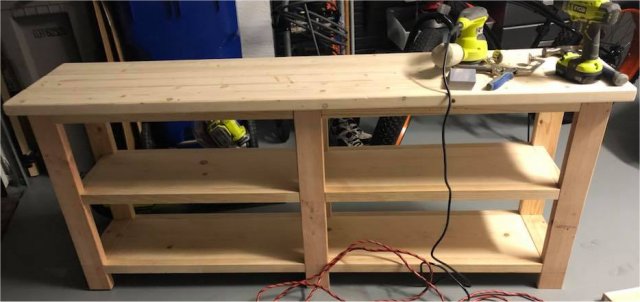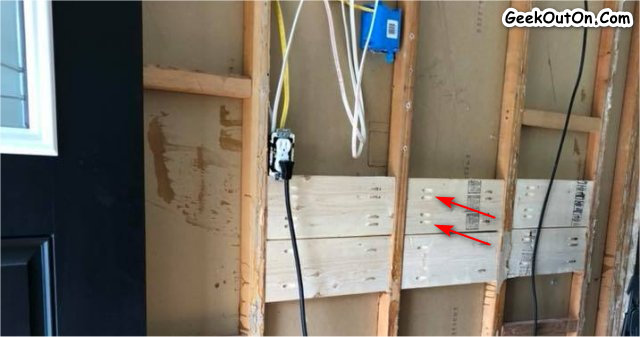Woodworking Like a Pro With the Kreg Jig
By Timothy Tibbettson 07/13/2023 |
One day I decided to try building a sofa table when I couldn't find what I wanted. With no woodworking experience, this should have been a bad idea. Everything changed when I got to the first steps that told me to drill pocket holes. I had no clue what a pocket hole was, and once I did, everything changed.
We've all seen pocket holes and probably never noticed or thought about them. Pocket holes are pre-drilled holes at roughly a 15-degree angle that join two pieces of wood together while hiding the screws from sight. For a finished look where the holes might be seen, you can purchase plugs to hide the holes. An excellent place you've probably seen them is your kitchen cabinets.
All you need is a Kreg Jig, wood glue, a clamp, and you're woodworking like a pro. There's virtually no learning curve, and the results are amazing. You can join the two pieces by deciding what size screw you'll need, then adjust the slider for that size. Apply a small bit of wood glue, clamp down the Kreg jig to clamp the two pieces together and drill the holes. Next, you drive the screws.
As I mentioned, my first attempt at woodworking was a sofa table. Having never built anything before, here is my first ever woodworking project:

I've also discovered other uses for the Kreg Jig. For example, I recently wanted to put supports behind a wall where a TV would be mounted. Rather than try to screw 2x4's at an angle, I pre-drilled the holes with the Kreg Jig. I now have strong supports for my TV, and I know each screw was driven correctly.

Kreg offers quite a few different sizes and versions of their products. I purchased the starter version in case my project didn't work out. I'm pleased with the affordability, and it's paid for itself many times over. If you'd like to see some woodworking plans, I'm a massive fan of Ann White.
Here are my top picks to get you started. You can purchase Kreg products at Amazon or your local hardware store. Both include a clamp, which you'll need. The left option includes pocket screws, which again, you'll need eventually.
As an Amazon Associate, we earn a commission if you purchase an item using our affiliate links.
comments powered by Disqus
We've all seen pocket holes and probably never noticed or thought about them. Pocket holes are pre-drilled holes at roughly a 15-degree angle that join two pieces of wood together while hiding the screws from sight. For a finished look where the holes might be seen, you can purchase plugs to hide the holes. An excellent place you've probably seen them is your kitchen cabinets.
All you need is a Kreg Jig, wood glue, a clamp, and you're woodworking like a pro. There's virtually no learning curve, and the results are amazing. You can join the two pieces by deciding what size screw you'll need, then adjust the slider for that size. Apply a small bit of wood glue, clamp down the Kreg jig to clamp the two pieces together and drill the holes. Next, you drive the screws.
As I mentioned, my first attempt at woodworking was a sofa table. Having never built anything before, here is my first ever woodworking project:

I've also discovered other uses for the Kreg Jig. For example, I recently wanted to put supports behind a wall where a TV would be mounted. Rather than try to screw 2x4's at an angle, I pre-drilled the holes with the Kreg Jig. I now have strong supports for my TV, and I know each screw was driven correctly.

Kreg offers quite a few different sizes and versions of their products. I purchased the starter version in case my project didn't work out. I'm pleased with the affordability, and it's paid for itself many times over. If you'd like to see some woodworking plans, I'm a massive fan of Ann White.
Here are my top picks to get you started. You can purchase Kreg products at Amazon or your local hardware store. Both include a clamp, which you'll need. The left option includes pocket screws, which again, you'll need eventually.
As an Amazon Associate, we earn a commission if you purchase an item using our affiliate links.
comments powered by Disqus






